Introduction
The artistic history of ancient cultures can be divided into five periods. In particular, one should speak about the Paleolithic period, Mesopotamia, Egypt, Aegean civilization, and Ancient Rome. This paper is aimed at discussing various works that represent these civilizations.
Moreover, it is necessary to show how these artifacts reflect the values and beliefs of people who belonged to these cultures. To a great extent, they can help viewers better understand the material culture of these societies, their political culture, and even gender roles. So, it is important examine these issues more closely.
The Paleolithic period
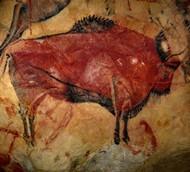
It should be mentioned that this painting was found in Altamira Cave., located in Spain (Hurel, 2013). Researchers offer different theories that can explain the meaning and purpose of various cave paintings, including this one. In particular, the artists, who created such images, could perceive these artworks as a form of magic which was supposed to improve the hunting of animals. If this interpretation is right, one can say that people, who belonged to this culture, held many supernatural beliefs.
Moreover, they could believe that animals had possessed certain spiritual qualities. Admittedly, these assumptions may not necessarily be right, because artists could create these images only to practice their skills. In any case, one can definitely state that animals played a critical role for the very survival of these communities that belonged to this culture. This is one of the reasons why cave paintings created during the Paleolithic period are dominated by the images of animals.
Mesopotamia
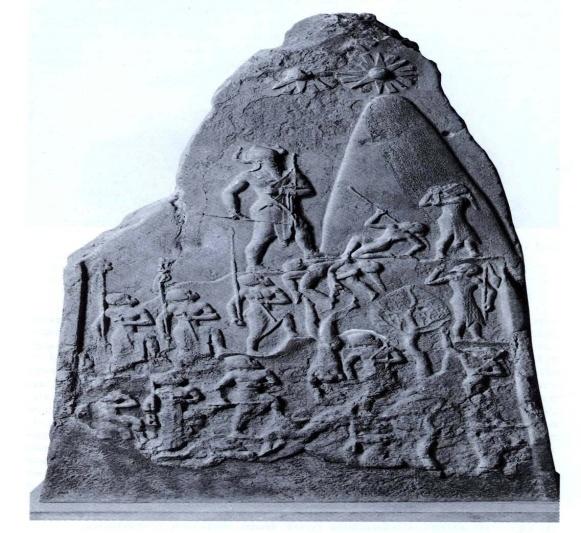
This artwork was supposed to glorify the Mesopotamian ruler, named Naram-Sin. Evidently, it was created to commemorate some of the military victories that he gained. In particular, he triumphed over Lullubi tribes. This stele is very informative because it demonstrates that people, who lived at that time, tended to perceive monarchs as divine-like entities (American Historical Association, n. d.).
Moreover, these kings wanted to show that they could act as intermediaries between common human beings and gods (American Historical Association, n. d.). Apart from that, this artwork implies that rulers were inherently superior to their subjects. Other artistic works created during this period also explore these themes.
So, this image is informative because it illustrates the political regime developed in the Mesopotamian society. So, one can suppose that this regime was extremely authoritarian. Furthermore, these absolute monarchs could allocate considerable resources to immortalize themselves. Additionally, this cultural artifact demonstrates that Mesopotamian sculptors developed sophisticated tools for rock cutting. These are some of the main details that should be singled out.
Ancient Egypt
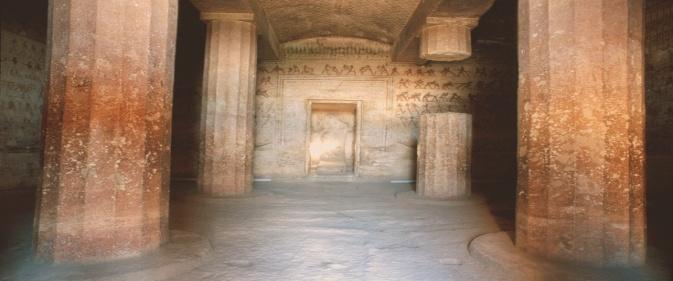
The rock-cut tomb of Amenemhet can be distinguished among other cultural artifacts of the Ancient Egyptian civilization because it is useful for understanding the values and beliefs of people, especially ruling classes. Moreover, one can appreciate the material culture of this society. In particular, these people attached importance to afterlife. Additionally, they believed that a person could get ready for this experience by taking several important steps (Kleiner, 2013, p. 68). In particular, they focused on the decoration of their tombs.
They could allocate significant resources in order to ensure that they could retain their glory and wealth in the afterlife. This is one of the points that should be considered. Apart from that, this architectural work can show that this society was very sophisticated in terms of its technological development. In order to complete such a project, people needed to possess knowledge of various construction materials.
Additionally, the ruling elites had to have access to unlimited labor resources. Furthermore, they had to spend several decades on such tasks. Overall, they could attain these goals only because they could exploit the slave labor. These are the main assumptions that can be made.
Aegean Civilization
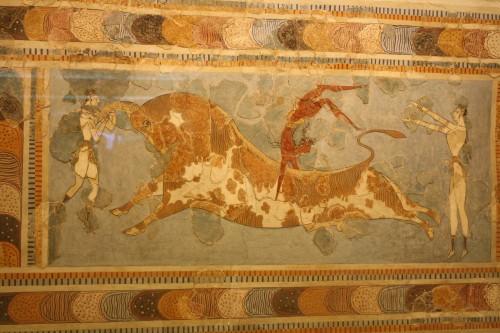
This fresco represents the pastime of people belonging to the Minoan culture which is one of the Aegean civilizations. Overall, this image can cast a light on some of the cultural values shared by people who lived during this period. In particular, they could believe that both men and women could take part in the same activities, even though these activities could be very dangerous. Therefore, they could value egalitarian relations between genders.
Furthermore, one can say that this culture was rather sophisticated. One should keep in mind that mural planting such as frescoes requires the knowledge of various materials such as lime plaster (Cartwright, 2012). People, who created this image, had to know how different chemical substances could prevent the colors from fading. This is one of the issues that should not be overlooked.
Ancient Rome
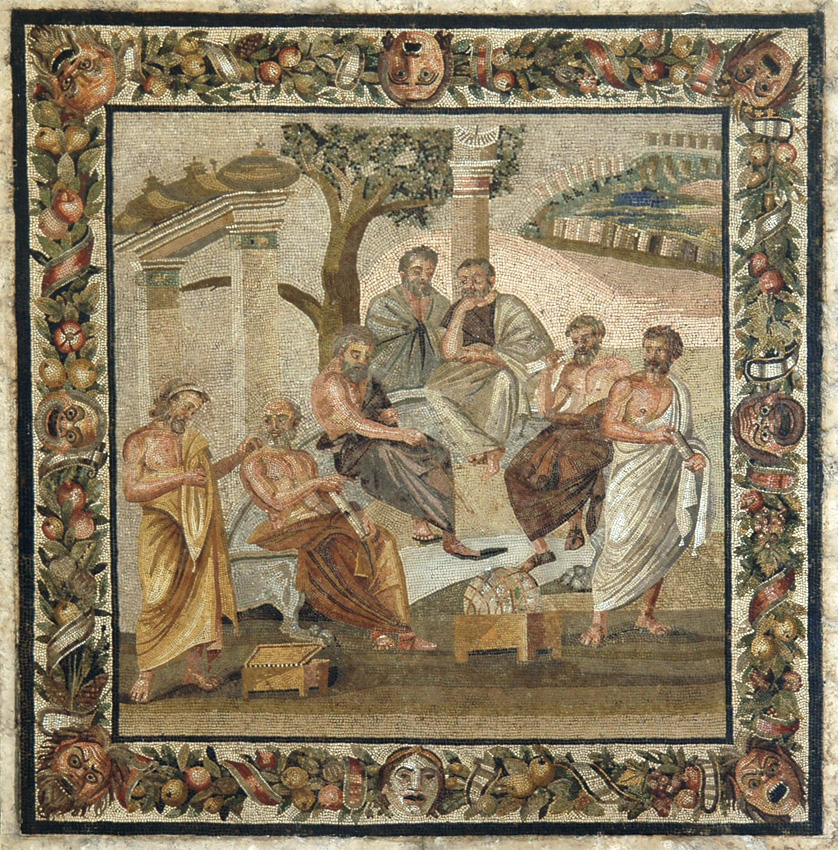
This fresco depicts the famous institution of learning which is known as Plato’s Academy. It is considered as the precursor to many European universities (Joplin, 2011). This fresco can help viewers better understand the values of people who lived in Pompeii before its destruction. In particular, they attached importance to education and philosophy. Additionally, it is possible to assume that they tried to develop educational institutions that could serve the needs of the upper classes.
Apart from that, one may conjecture that men played the dominant role in this society. The problem is that women are excluded from this institution of higher learning. Apart from that, the creators of this mosaic tended to venerate the culture of Greece which gave rise to the civilization of Ancient Rome.
So, one can say that this artwork enables people to understand the cultural values of the society, its aesthetic ideals, and philosophical principles. However, a person can reach these conclusions about this culture only if he/she relies on other documents about the Roman civilization, its history, and political regime.
On the whole, this timeline illustrates the way in which art evolved during the span of many millenniums. Additionally, these changes show that the values and beliefs of people became more sophisticated. Additionally, one can argue that artworks could be used to highlight the greatness of people who ruled the society. Furthermore, artistic and architectural works were closely associated with the spiritual life of people.
They could be created to ensure that a person could retain his/her social status in the afterlife. So, one can argue that art becomes more informative if it is possible to rely on other primary sources about a specific culture or a civilization. These are the main aspects that can be distinguished.
Reference List
American Historical Association.Victory Stele of Naram-Sin. Web.
Cartwright, M. (2012). Minoan Frescoes. Web.
Hurel, A. (2013). Prehistoric paintings in the Altamira Cave, Santillana. Web.
Joplin, K. (2011). Plato’s Circle in the Mosaic of Pompeii. Web.
Kleiner, F. (2013). Gardner’s Art through the Ages: The Western Perspective. New York, NY: Cengage Learning.